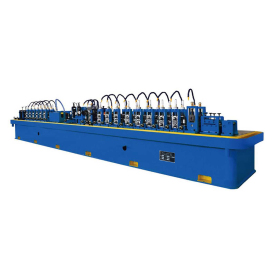[Industrial Flying Saw Machine]The Ultimate Guide to Industrial Flying Saw Machines: Revolutionizing Precision Cutting in Modern Manufacturing Processes
News 2024-7-31
In the fast-evolving world of manufacturing and industrial production, precision and efficiency are paramount. Among the multitude of machines designed to enhance these attributes, the Industrial Flying Saw Machine stands out as a critical innovation. This machine is engineered to provide high-speed cutting capabilities with unparalleled accuracy, making it an essential tool in various industries, including metal fabrication, construction, and woodworking.
Understanding the Industrial Flying Saw Machine
The Industrial Flying Saw Machine, as the name suggests, employs a "flying" cutting mechanism that allows for precise cuts at high speeds. Unlike traditional saws where the material is stationary and the saw blade is moved, flying saw technology integrates motion, allowing the saw blade to operate while the material is in motion, thereby boosting throughput. This cutting method is particularly beneficial in production lines where materials must be cut into specific lengths or shapes.
Key Features and Advantages
1. **Increased Efficiency**: One of the most significant advantages of the Industrial Flying Saw Machine is its ability to cut materials quickly without sacrificing quality. Traditional cutting methods often require stopping the production line to make precise cuts. In contrast, the flying saw allows continuous feeding of materials, resulting in time savings and increased overall productivity.
2. **Precision Cutting**: The flying saw utilizes advanced technologies such as CNC (Computer Numerical Control) that enables it to execute cuts with exceptional precision. This is particularly beneficial for industries requiring tight tolerances, such as aerospace and automotive manufacturing.

The Ultimate Guide to Industrial Flying Saw Machines: Revolutionizing Precision Cutting in Modern Manufacturing Processes
4. **Reduced Waste**: With accurate cutting capabilities, the Industrial Flying Saw Machine minimizes material waste. The precision means less rework and scrap, contributing to more sustainable manufacturing practices.
5. **Safety Features**: Manufacturers of flying saw machines incorporate numerous safety features, such as protective shielding and automated shut-off systems, which help reduce the risk of accidents in high-paced industrial environments.
Applications of Industrial Flying Saw Machines

The Ultimate Guide to Industrial Flying Saw Machines: Revolutionizing Precision Cutting in Modern Manufacturing Processes
- **Metals and Alloys**: In the metalworking industry, these machines are extensively used to cut steel beams, pipes, and other metal materials. Their high-speed and accuracy ensure that cuts are clean and ready for further processing.
- **Construction**: The construction sector frequently uses flying saw machines for cutting lumber and various materials at precise lengths and angles, improving the efficiency of building processes.

The Ultimate Guide to Industrial Flying Saw Machines: Revolutionizing Precision Cutting in Modern Manufacturing Processes
- **Woodworking and Furniture Manufacturing**: In woodworking applications, flying saw machines help create furniture pieces with beautiful finishes and exact dimensions, enhancing production speeds while maintaining high-quality standards.
Future Trends in Industrial Flying Saw Technology
As technology continues to advance, the Industrial Flying Saw Machine is expected to evolve further. Innovations such as automation, artificial intelligence, and improved blade technologies promise to make these machines even more efficient and versatile. Furthermore, with the increasing emphasis on sustainability, future models may incorporate features that further reduce waste and energy consumption.
Conclusion
In summary, the Industrial Flying Saw Machine emerges as a game-changer in the industrial cutting landscape, offering unmatched efficiency, precision, and versatility. As manufacturing demands evolve, this machine will likely play an integral role in designing future production processes, reinforcing the importance of investing in cutting-edge technology for businesses aiming to stay competitive in a fast-paced market. Whether it’s in the metal industry or woodworking, the flying saw represents a critical tool for achieving high standards of quality while meeting the ever-increasing demand for speed in manufacturing.
